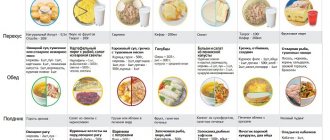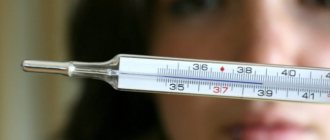Home > Baby > Breastfeeding >
A newborn baby requires full attention and all-consuming care from its mother. An important component of this period is lactation. However, in some cases, a woman produces little breast milk (hypolactorrhea). Natural questions arise about how to increase breast milk lactation and what to do in case of stagnation of milk in a nursing mother. After all, its lack directly affects the development and growth of the newborn.
- 1 The main signs of lack of milk
- 2 Basic principles of breastfeeding
- 3 Simple methods for maintaining lactation
- 4 Traditional medicine
- 5 Foods that increase breast milk lactation
What is lactation?
Lactation is the process of the appearance of breast milk in the mammary glands. Lactation is unstable for the first three months and it is difficult to talk about the amount of milk; after three months the process improves and breast milk arrives steadily and evenly, which is enough to fully feed the baby.
The process of milk production in women depends closely on the needs of the baby; scientists have proven that with proper feeding, the amount of milk produced is sufficient to saturate the baby’s body.
In 80% of women, lactation is disrupted; this can be caused by: nervousness and emotional instability of the mother, improper attachment of the baby to the breast, lumps on the woman’s breast, previous illnesses during feeding, and much more.
For the mother, the flow of milk is accompanied by a slight pinpoint tingling sensation in the mammary glands. This is a normal reaction of the body. The more massage movements you make, the more milk flow increases.
Tablets can only be used as prescribed by a doctor; you should not make prescriptions for yourself. In any case, pills are a last resort. To improve lactation, a nursing mother should follow simple tips, which we will consider below.
Many young mothers come to the doctor with the question of how to increase lactation. The production of breast milk is an individual and very specific issue, since a woman’s body is a complex system.
The simplest and most proven way to increase lactation is to learn to live in harmony with yourself, not to be nervous, to avoid sharp corners and to receive more positive emotions. The psychological state of a nursing woman directly affects the supply of breast milk.
Walking in the fresh air greatly improves your mood and thereby improves milk flow. It is recommended to walk at least two hours a day. The optimal time to saturate the body with energy.
Even with the busiest day and troubles, a young mother should find time to do what she loves. For example, visit a cosmetologist, bake your husband’s favorite pie, go shopping. At this time, the husband or grandparents can take the child for a walk.
Grandsons, an excellent antidepressant and magically relieves fatigue and fatigue. If you do everything unconditionally, then lactation does not require medications and pills to increase milk.
Why does a lack of breast milk occur?
Breast milk is the source of all the valuable substances a baby needs. Pediatrician E. Komarovsky does not see any need to introduce complementary foods to a child until six months. According to the doctor, the problem of insufficient lactation is often invented by young mothers themselves, without any reason.
If the baby gains enough weight, is cheerful and cheerful, then everything is in order with his nutrition.
However, in some cases, a woman actually experiences a lack of breast milk due to the following reasons.
- Poor nutrition for a nursing mother. Many women after childbirth strive to lose weight in a short time: they limit themselves in fats and carbohydrates (consciously refuse healthy foods), which inevitably affects lactation. Nevertheless, Komarovsky does not consider this factor to be paramount.
- Improperly organized drinking regime. A young mother should drink about 1.5–2 liters of liquid per day.
- Violation of feeding regime. Too long intervals between putting the baby to the breast lead to a decrease in milk production.
During the day, feed strictly at intervals of 3 hours, the night break will be 6 hours, after 2 months increase the interval to 3.5 hours, and the night break to 7 hours.
- Postpartum depression, stress, and negative emotions contribute to a decrease in lactation, up to its complete cessation. This group of factors also includes fatigue, lack of sleep and intense physical activity.
Photo gallery: factors leading to decreased lactation
In an effort to quickly regain her slim figure, nursing mothers often neglect proper nutrition.
Insufficient fluid intake leads to decreased milk production
Stress, fatigue and negative emotions do not have the best effect on lactation
Improve lactation with your own hands
To increase lactation, use self-massage. Great and free method. You will need to lubricate your hands generously with oil, you can use baby oil, and then rub the mammary glands with light massaging movements.
The oil should not get on the nipple itself, since the baby has close contact with it. So as not to cause breast aversion or poisoning. Massage should be carried out 3-4 times a day; during the massage, the breasts warm up and the flow of milk increases significantly.
One massage will not be enough to get the full effect, so carry out massage treatments regularly until your lactation improves.
Important!
Adequate nutrition for a nursing mother is the key to successful breastfeeding of a baby.
To increase lactation, high-calorie home-cooked food will be beneficial. During breastfeeding, you should not go on diets or starve.
Important!
The figure is a figure, and the baby’s health comes first. Include foods in your diet: weak tea with condensed milk or green tea with honey.
The tea must be hot. You can also use special tea to increase lactation; it contains medicinal herbs, thanks to which the flow of milk increases.
Carrot or currant juice. Freshly squeezed juices are a wonderful vitamin complex for the health of the baby and mother. Add juices to your diet gradually, in small quantities, and monitor your child’s reaction.
Sometimes they cause an allergic reaction and rash, everything is very individual.
Low-fat meat soups, broths. Chicken or beef are great for soups. It is better not to fry the soup, but boil the vegetables well, avoid hot herbs and spices.
How to increase the amount of breast milk with seeds? The seeds can be compared to a folk drug. They contain many nutrients that promote lactation. The seeds contain a huge amount of fatty acids.
Pumpkin or sunflower seeds can replace a bunch of products due to their rich and healthy composition.
Water is the source of vital energy
How to increase lactation with water? It's simple. Of course, tap water will do little to solve the problem, but purified water will do a great job. During the feeding period, a woman must drink up to 3 liters of water per day.
For many, this figure seems overwhelming, but proper distribution of fluid throughout the day proves the opposite. It is recommended to drink 3-4 sips of water 10-15 minutes before each feeding.
In the morning, when you get out of bed, 1-1.5 glasses of water. Moreover, when breastfeeding, women often experience thirst, and dehydration of the body cannot be allowed.
How to stimulate lactation with the help of medications? Gynecologists advise taking apilak tablets, the basis of the tablets is honey, a very useful ingredient for a nursing mother.
Should be taken three times a day. After just a couple of days of taking the pills, milk flow increases significantly. If the situation has stabilized, you don’t have to take the pills, the main thing is that they have no contraindications.
Apilak perfectly stimulates the increase in breast milk, especially in firstborns. Perhaps the woman’s body has not completely rebuilt itself and the process of milk arrival is slowed down.
Signs of infant malnutrition
Any little thing can cause anxiety in an inexperienced mother, and she can actually invent a problem that does not exist.
How to determine that a baby really does not have enough milk:
- According to his health. If he eats with appetite, sleeps soundly and gains normal weight, then there is no reason to worry; a hungry child will not sleep.
- By the amount of milk consumed. If you have a scale, you can weigh your baby before and after feeding. The required volume depends on the age and individual characteristics of the child.
- By the number of urinations. A well-fed child urinates about 10-12 times a day, the urine is light, without a strong odor.
- By the number and type of bowel movements. Liquid dark yellow stool after each feeding is proof that the baby is full.
How to increase lactation, advice from Komarovsky
Place your baby on your breast as often as possible; even a couple of drops of breast milk can replace synthetic formula for your baby. Adjust the child 10-11 times per day. Avoid hunger, eat healthy foods, and consult your pediatrician if necessary.
Choose the most comfortable position for yourself when breastfeeding, then the baby will be able to properly grasp the nipple without tension and enjoy breast milk and the warmth of the mother.
There is no need to wean the baby from the breast when he is still wet. Give the child the opportunity to release the nipple on his own, do not rush him, let him enjoy and eat his meal.
How to quickly increase lactation using a breast pump?
Working with a breast pump makes a woman's life easier. You should discuss with your doctor how to express breast milk to increase lactation and act strictly in accordance with the instructions included with the device.
Breast pumps can be manual (piston with a working lever, in the form of a syringe, in the form of a pump) and electric. You can choose a model that meets all a woman’s requirements; there are a great many of them on sale.
All you need to do is regularly empty your breasts after feeding your baby, observing all sterility and safety conditions.
A pump breast pump requires rhythmic squeezing of a bulb, while a syringe design requires back-and-forth movements to ensure milk is drawn out using vacuum. The most convenient are breast pumps with a piston and a lever; we press the working part to the mammary gland and press the lever. Automatic models with electric drive are the easiest to handle; you just need to take a comfortable position, put the cup to your chest, select the desired speed and press start.
Correct use of breast pumps turns breastfeeding into a real pleasure, eliminates unnecessary problems and provides the baby with adequate nutrition.
How to increase lactation: express milk with a breast pump
The doctor is a reliable ally
Don't be afraid to ask your doctors questions about lactation topics, such as how to improve your lactation or how to increase your breast milk supply.
A qualified specialist will be happy to answer all your questions and give practical advice. The future of your baby depends on your adequate breastfeeding.
Important!
Remember that a healthy lifestyle is encouraged not only during breastfeeding, but throughout life in general.
Eliminate alcohol and cigarettes from your life. A woman who smokes does not inspire confidence in men, especially if you are breastfeeding. It’s better to eat a piece of natural dark chocolate or a banana, there will be much more benefits and moral satisfaction.
Feed your baby with pleasure, he feels and understands everything, even though he is very small and defenseless. You can increase the amount of breast milk in a thousand ways, the main thing is your desire and desire.
Breast volume does not matter for adequate feeding of a baby. If a woman feels that milk is disappearing, she should pay attention and take immediate action.
Prevention
To keep lactation at a good level, sometimes the simplest preventive actions and abstinence included in maternal daily routine are enough:
- in the first month or two - do not make independent decisions on the type of feeding;
- do not avoid feeding at night, since this is when the daily peak of oxytocin production occurs;
- interact tactilely with the baby as often as possible;
- do not wear constricting bras and underwear;
- do not supplement your baby with artificial formula without a doctor’s recommendation;
- do not abuse the pacifier or exclude it while breastfeeding;
- Avoid overwork or intense sports.
Some problems with breastfeeding occur in 80% of mothers. Increasing lactation is a systemic task, which means that personal knowledge, a healthy lifestyle, a prudent strategy in determining feeding regimens, as well as consultations with specialists must be used in combination.
But the main thing is not to sound the alarm prematurely and not to grab a bottle without making sure that there are reasons for using artificial or mixed feeding.










